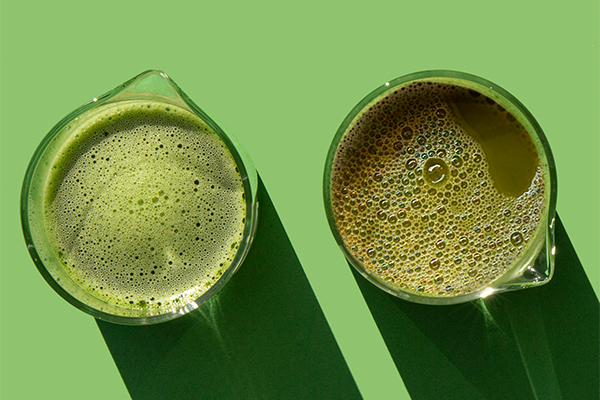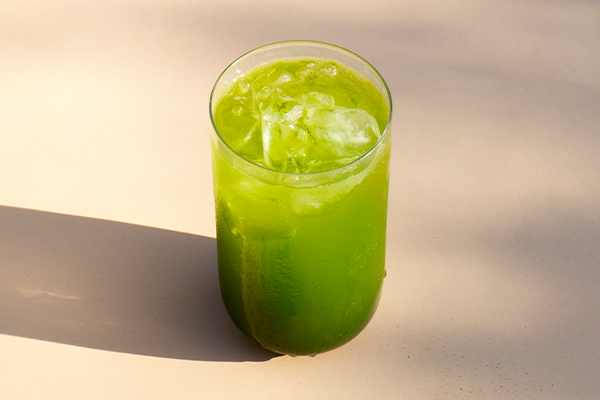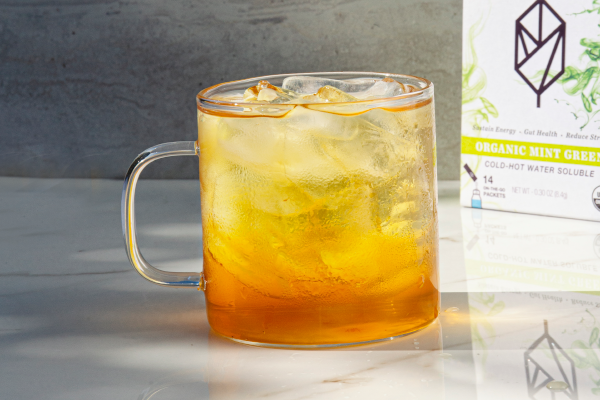China and Japan are the predominant green tea producers in the world, and both value the tradition of tea making and tea drinking as central to their way of life.
While they are similar in many ways, there are a few key differences to know before you buy a batch.
Here are 4 areas where the two types of green tea diverge.
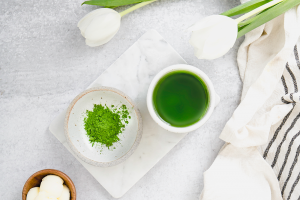
What’s The Difference Between Japanese and Chinese Green Tea?
1. History & Cultural Significance
While green tea plays a central role in both Chinese and Japanese culture, it is only native to China. Green tea is first documented in 8th century Chinese text — it would be 100 years or so before Buddhist monks brought the Camellia sinensis tea plant and green tea processing methods over to Japan.
That being said, green tea has taken on more storied significance in Japan — matcha green tea in particular.
While both cultures center social gatherings around the offering of green tea, the Japanese took it a step further with the development of Japanese Tea Ceremonies.
These rituals, which use matcha green tea specifically, are designed for the appreciation of nature, art and aesthetics as much as they are about conversation with guests, who adhere to specific rules governing everything from seating arrangements to speaking order and sharing of tea.
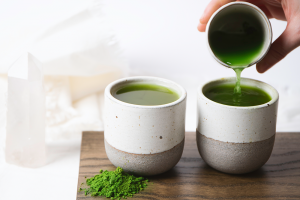
2. Processing Styles & Flavor
While both Chinese and Japanese green tea are made from the same plant, they produce different colors and flavors due to differences in processing. All green tea is cooked in some fashion after harvesting to halt the oxidation process, resulting in its characteristic green color and more vegetal flavor.
It’s the method of cooking that varies.
The Chinese tend to pan-fry fresh-picked green tea leaves in a super-hot wok, which lends a roasty note to the flavor profile. In some cases, Chinese green tea does undergo a slight fermentation before frying, since the leaves may be stored briefly before cooking. This interval between picking and frying could allow some oxidation to occur, which also produces a slightly sweeter flavor and yellowish color when brewed.
Because of the opportunity for a touch of fermentation, and cooking with direct heat, Chinese green tea tends to be less bitter and astringent than its Japanese counterpart.
It is also typically brewed with moderately-hot water for just a minute or less, to ensure its sweet, floral undertones are maintained.
Japanese green tea, on the other hand, is steamed instead of pan fried, and cooked straight away to avoid any oxidation and maintain the leaves’ crisp, bright green color.
Japanese green teas usually impart a more distinct, grassy flavor.
In addition to flavor differences, the two green teas often take different shapes. Depending on the variety, Chinese green teas may be molded into tight rolls, looser spirals, or balls once they are cooked. This shaping helps to activate enzymes in the leaves that create flavor and aroma, and results in a more controlled steep as the leaves unfurl.
Japanese green tea, on the other hand, tends to be left in short, flat arrows, which delivers a more intense, up-front flavor when brewed.
3. Varieties & Price
Thanks to China’s large size and topographical diversity, it is able to produce a greater variety of cultivars compared to Japan, and a greater volume of green tea overall. China is the #1 supplier of green tea today, exporting $686 million worth of green tea, compared to Japan’s $67 million. [1].
While China produces multiple varieties, three of the most popular include Da Hong Pao, Tieguanyin (Iron Goddess of Mercy) and Liangjing (Dragon Well).
Da Hong Pao is a rock tea grown on the mountainsides of the Wuyi province, and is among the most expensive in the world. Rock teas in general have a more mineral taste, and are more costly thanks to the difficulties inherent in farming and harvesting plants on rocky hills. Tieguanyin is grown in the Anxi county of Fujian province, while Lianjing comes from the Chinese village of the same name. These are slightly more accessible but still high quality varieties.
Japanese tea growers produce a more limited variety. Two of the best known are Matcha and Yabukita.
Matcha green tea leaves are shaded while they grow in order to boost the chlorophyll content and create a brighter green color. Once dried, the leaves are then ground into a fine powder to create a suspension, rather than an infusion, in hot water.
Matcha green tea comes in either culinary or ceremonial grade. Ceremonial grade teas are more expensive, but are grown specifically for drinking. Culinary grade matcha is more affordable, but — as the name suggests — is better suited to be used in recipes alongside other flavors that will balance out its grassy taste.
Yabukita green tea is much more widely grown, and is used to make sencha tea, which is steeped in hot water like traditional teas. It doesn’t carry quite the same cultural significance, but does deliver all the characteristic flavors of Japanese green tea.
4. Antioxidant Content
Both Japanese and Chinese green teas are rich sources of the antioxidant epigallocatechin gallate (EGCG). This powerful polyphenol packs a number of wellness-boosting properties.
By neutralizing free radicals, antioxidants like EGCG help to support a healthy anti-inflammatory response and support overall wellness. Some studies also show that EGCG can support a healthy metabolic rate, which may help regular green tea drinkers burn a bit more fat. [2][3]
If you want to maximize these health benefits, research suggests that Japanese matcha green tea may be the way to go. [4] It all comes down to both farming and cooking methods.
First, matcha green tea leaves build up greater quantities of ECGC thanks to the shade they are provided while growing, as exposure to direct sunlight can damage polyphenols.
They also lose fewer catechins during the cooking process since steaming is more gentle than pan frying in a smoking hot wok. Finally, matcha drinkers end up consuming all the antioxidants stored in the leaf itself because they are drinking the entire leaf in powder form — not just what seeps into hot water!
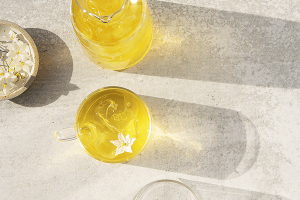
What is the best quality green tea?
Ultimately, both Chinese and Japanese green tea deliver a vegetal flavor and a healthy dose of antioxidants. If you’re looking to dive deep into ceremonial tea culture, or want the most catechins per serving you can find, Japanese matcha is the best option.
If you don’t want to break the bank, or don’t care for the assertive astringency of green teas you’ve tried before, opt for a Chinese variety. They tend to be more affordable because they are more widely available, and typically have a more mellow flavor, with underlying hints of sweetness to balance the bitter.
In either case, there are many varieties to try… we encourage you to experiment to find the one that best suits your taste!



